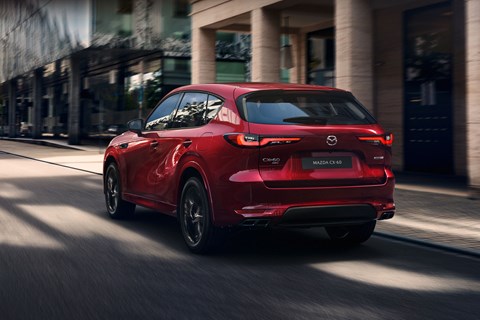► Two power outputs – 197bhp or 251bhp
► Available with rear- or four-wheel drive
► Prices start from £42,990
Mazda has launched a pair of new mild-hybrid diesel engines for the CX-60 SUV. Both are based on the same 3.3-litre straight-six unit and both feature mild hybrid assistance to improve fuel economy.
The cheapest version of the Mazda CX-60 diesel is priced from £42,990. It produces 197bhp and has a claimed WLTP fuel economy figure of 56.5mpg. CO2 emissions are also quite low at 129g/km.
Prices for the more powerful diesel engine start from £45,630. It produces 251bhp and 406lb/ft of torque which, unlike lower-output version of the car, is sent to all four wheels. Fuel economy is a claimed 53.3mpg, while CO2 emissions stand at 137g/km.
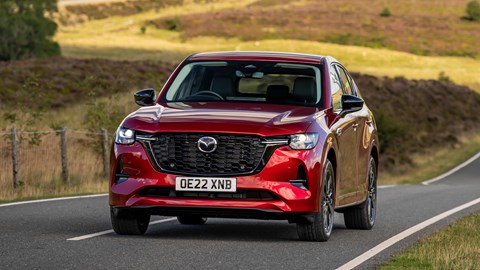
Mazda says the CX-60’s diesel engine is one of the cleanest in the world, with a thermal efficiency of more than 40%. Its impressive efficiency, economy and emissions are thanks in equal part to a 48-volt mild-hybrid system and a clever combustion method called Distribution-Controlled Partially Premixed Compression Ignition (DCPCI).
Basically, the fuel and air mixture is combined before it hits the cylinder and is then auto-ignited by being squashed into the cylinder head rather than leaning on a glow-plug (like an older diesel). The engine is also very light for its size – despite having two extra cylinders, Mazda says it weighs about the same as the 2.2-litre unit used in the CX-5.
But what if I don’t want a diesel?
Mazda will sell you a plug-in hybrid version of the CX-60, priced from £43,950. The powertrain comprises a 2.5-litre four-cylinder petrol engine, a 100kW electric motor and a 17.8kWh battery pack, for a combined output of 323bhp and 369ft/lbs of torque. Drive goes to all four wheels via an eight-speed automatic gearbox.
Mazda says that’s enough for 0–62mph time of 5.8 seconds, which puts the CX-60’s performance on level-footing with the considerably more expensive Volvo XC60 T6. It’s also quicker than the BMW X3 xDrive30e, which manages the same sprint in 6.1 seconds.
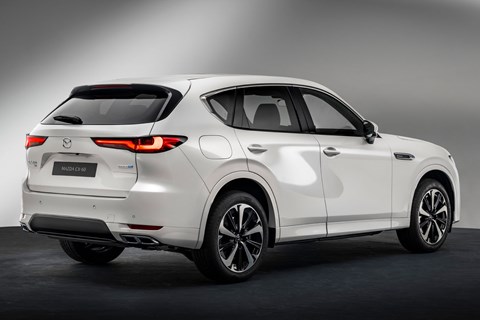
Mazda’s PHEV system has more than just straight-line speed going for it, though. The battery can store enough energy for a maximum pure electric range of 39 miles on the open road or 42 miles in the city. Keep the battery topped up and Mazda says the CX-60 will manage 188mpg, while CO2 emissions sit at just 33g/km. That puts the car in the lowest paid tax bracket.
Later in the CX-60’s life, Mazda will also launch a 3.0-litre straight-six petrol engine. Performance specifications are yet to be confirmed, but it will feature a with 48-volt mild-hybrid system.
Premium, you say? Well, what’s the equipment like?
It’ll probably suffice for all but those residing in the highest echelons of the aristocracy. The most basic Exclusive-Line variant comes with LED headlights, a power-operated tailgate, heated leather seats, a heated steering wheel and a 12.3-inch infotainment system.
You can improve the base-model’s level of equipment by specifying Mazda’s optional Comfort Pack. It costs £1,400 and adds 20-inch alloy wheels, electrically adjustable and ventilated front seats, heated rear seats and memory settings for the door mirrors.
The package also includes Mazda’s Driver Personalisation System. It uses an interior camera to recognise the person sitting in the driver’s seat and then automatically adjusts the steering wheel, seat position, climate control and radio to their preferences.
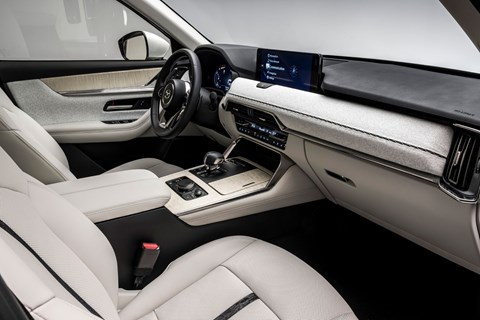
Stepping up a rung, there’s the mid-range CX-60 Homura. Prices start from £46,700 – and upgrades over the base-model include 20-inch alloy wheels, body coloured wheel arches and black chrome replacements for the exterior brightwork. Inside, buyers get all of the technology found in the Comfort Pack, along with an ambient lighting system.
The range-topping Takumi variant is priced from £48,050 (which, by the way, is still around £4,000 less than the cheapest X3 plug-in) and features a different set of 20-inch alloy wheels, chrome exterior trim and a model-specific radiator grille. Oh, and you get some cream leather and wood trim for the interior, as shown by the car in our gallery.
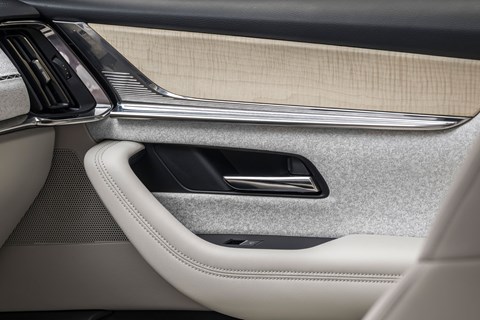
Homura and Takumi versions of the CX-60 can also be specified with a further pair of option packs. The £1,000 Convenience Pack adds privacy glass and some handy technology such as 360-degree parking camera and a wireless phone charger.
The somewhat self-explanatory Driver Assistance Pack includes (you guessed it) a host of additional driver assistance technology. It costs an extra £1,100 and adds adaptive LED headlights, front cross-traffic alert, rear cross-traffic braking and adaptive cruise control. You can also bundle the Convenience and Driver Assistance Pack together on the diesel models for a single payment of £1,900.
That’s a lot to take in. Anything else I should know about?
As it happens, there is – so pay attention. In addition to all the usual driver assistance and infotainment technology, Mazda has fitted the CX-60 with Kinetic Posture Control. Basically, it’s a stability control system that brakes the inside rear wheel when cornering to help manage body roll and settle the car.
This handling-focussed tech seems like a strange addition to a large family SUV – especially given that the same system is found on the latest versions of the MX-5 sports car. However, Mazda’s motive is to make the CX-60 as much fun to drive as possible.
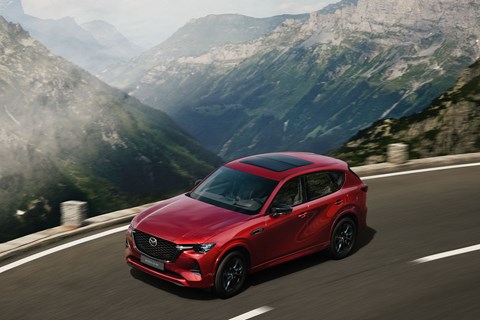
Mazda says the system is complemented by multi-link rear suspension, a plethora of drive modes and a low centre of gravity. The firm’s engineers achieved this latter point by mounting the heavy battery pack along the car’s spine, between the front and rear axles.
And what if I have an enormous family?
Mazda’s thought of that, too. In the next two years, the firm will launch the CX-80, which will basically be an extended wheelbase, seven-seat version of the CX-60. It’ll occupy the top spot in Mazda’s line-up and rival everything from the Skoda Kodiaq to the Volvo XC90.
The CX-60 should be spacious enough for most families, though. Mazda says it’s the most practical model in its range so far, with a boot capacity of 570 litres and seating for five.
